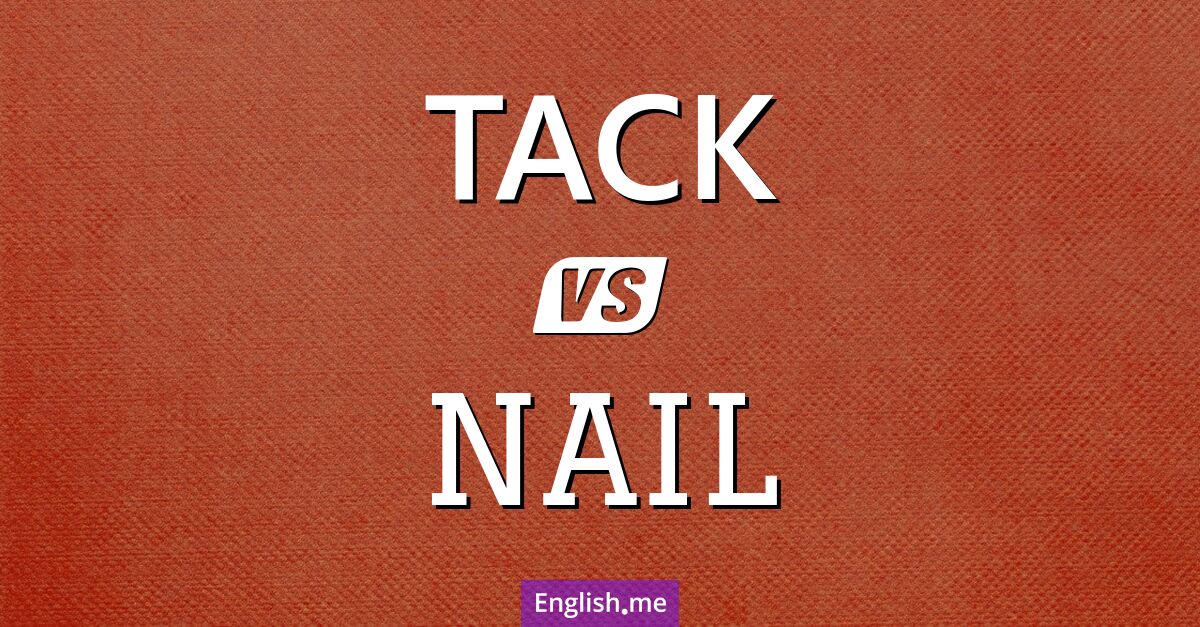Fastening language: unpacking "tack" vs "nail"
Reviewed and edited by  Lloyd Cooper 30/09/2024, 18:03
Lloyd Cooper 30/09/2024, 18:03
English.me team member

 What is similar?
What is similar?
Both "tack" and "nail" can refer to small metal fasteners used to attach materials and can also be used as verbs to describe the act of fastening objects.
 What is different?
What is different?
A "tack" is typically smaller, with a flat, wide head, and is often used for temporary fastening, such as in upholstery. A "nail" is usually longer, with a smaller head, and is used for more permanent construction and woodworking.
 Which one is more common?
Which one is more common?

 Examples of usage
Examples of usage
Tack- She used a tack to pin the fabric to the board.
- We need to tack this picture to the wall until we get a proper frame.
- He used a nail to hang the painting.
- The carpenter drove a nail into the wooden beam to secure it.

 English
English español
español française
française italiano
italiano deutsche
deutsche 日本語
日本語 polski
polski česky
česky svenska
svenska Türkçe
Türkçe Nederlands
Nederlands